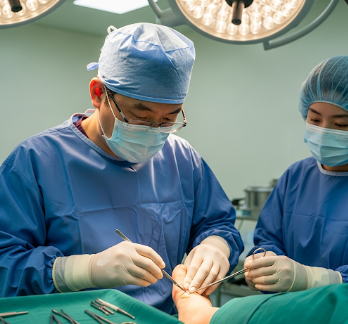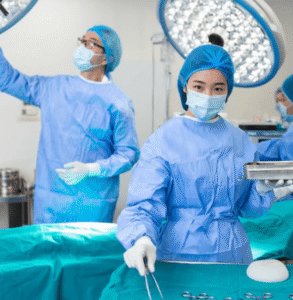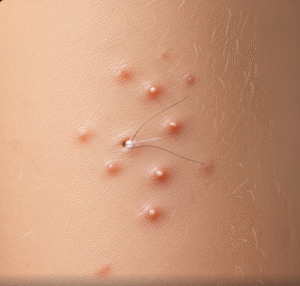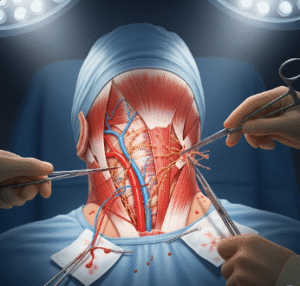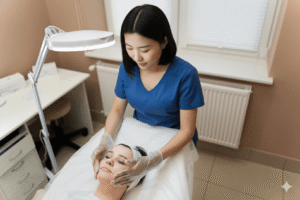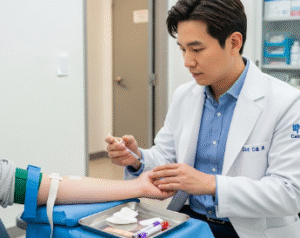Overview
Bunion surgery, medically known as bunionectomy, is a surgical procedure performed to correct a bunion (hallux valgus)—a bony bump that forms at the base of the big toe. Bunions can cause pain, swelling, deformity, and difficulty walking.
In South Korea, bunion surgery is performed using advanced minimally invasive techniques and precision orthopedic care, ensuring faster recovery, reduced pain, and better cosmetic outcomes. Korean orthopedic hospitals are known for modern imaging systems, specialized surgical instruments, and post-operative rehabilitation programs.
What is Bunion Surgery?
Bunion surgery is a procedure to realign the big toe joint, remove the bony bump, and correct the deformity.
Types of bunion surgery include:
- Osteotomy: Cutting and realigning the bone.
- Exostectomy: Removing the bunion bump without realigning the bone.
- Arthrodesis: Fusing the joint for severe deformity.
- Minimally Invasive Bunion Surgery: Small incisions and specialized tools reduce tissue trauma and speed recovery.
The choice of surgery depends on the severity of the bunion, patient age, activity level, and overall health.
What are the Benefits?
Bunion surgery provides significant functional and cosmetic benefits:
✔ Relief from chronic foot pain and discomfort.
✔ Correction of toe deformity to restore proper alignment.
✔ Improved walking and mobility.
✔ Prevention of future joint damage.
✔ High success rate in Korea using minimally invasive techniques.
✔ Faster recovery and reduced scar formation with advanced surgical methods.
Procedure Details
1) How should I prepare for Bunion Surgery?
- Medical evaluation: Blood tests, X-rays, and assessment of foot and ankle health.
- Medication management: Certain blood thinners or supplements may need to be paused.
- Foot care: Stop smoking, and maintain good hygiene.
- Pre-surgery planning: Discuss anesthesia type, surgical technique, and recovery plan.
Korean orthopedic centers often provide detailed preoperative counseling, including 3D imaging of the foot for precise planning.
2) What happens during the procedure Bunion Surgery?
- Surgery is performed under local, regional, or general anesthesia.
- Incisions are made at the base of the big toe.
- Bony deformity is corrected:
- Osteotomy: bone is cut and realigned.
- Exostectomy: bunion bump is removed.
- Arthrodesis: joint is fused if necessary.
- Soft tissues are adjusted to restore proper alignment.
- Incisions are closed with sutures, and the foot is bandaged.
The procedure usually takes 1–2 hours. In Korea, minimally invasive techniques reduce tissue damage and speed recovery.
3) What happens after a Bunion Surgery?
- Patients may stay overnight or go home the same day.
- Compression dressing or surgical shoe is worn to protect the toe.
- Limited weight-bearing may be required for 4–6 weeks.
- Physical therapy helps restore mobility and strength.
- Follow-up visits monitor healing, alignment, and recovery progress.
Korean hospitals often provide personalized rehabilitation programs and post-op care instructions for international patients.
Risks / Benefits
Possible Risks:
- ➤ Infection at the surgical site
- ➤ Swelling, bruising, or temporary numbness
- ➤ Pain or stiffness in the toe
- ➤ Recurrence of bunion (rare with proper technique)
- ➤ Delayed bone healing or need for revision surgery
Main Benefits:
- ✔ Significant pain relief and improved mobility
- ✔ Correction of toe deformity for functional and aesthetic improvement
- ✔ High success and patient satisfaction rates in Korea
- ✔ Faster recovery with minimally invasive methods
Recovery and Outlook
- Immediate post-op: Elevate the foot, use ice packs, and follow pain management protocols.
- First 2 weeks: Limited mobility; surgical shoe or bandage worn.
- 4–6 weeks: Gradual weight-bearing; physical therapy begins.
- 3–6 months: Full recovery with restored mobility and reduced swelling.
With expert Korean orthopedic care, most patients experience excellent functional outcomes and long-lasting correction.
When To Call the Doctor
Contact your surgeon if you experience:
- ➤ Severe or increasing pain
- ➤ Excessive swelling or redness
- ➤ Persistent bleeding or discharge
- ➤ Fever or signs of infection
- ➤ Difficulty moving the toes beyond normal recovery
Best Korea Option / Process
South Korea is a world-class destination for bunion surgery due to:
- Experienced orthopedic surgeons specializing in foot and ankle deformities.
- Advanced minimally invasive techniques reducing pain and scarring.
- Comprehensive preoperative planning using imaging and 3D modeling.
- Post-surgery rehabilitation programs for optimal recovery.
- Affordable treatment costs compared to Western countries, without compromising quality.
Top hospitals and clinics for bunion surgery in Korea include:
- Samsung Medical Center
- Asan Medical Center, Seoul
- Seoul National University Hospital
- JK Orthopedic & Sports Surgery Clinic

